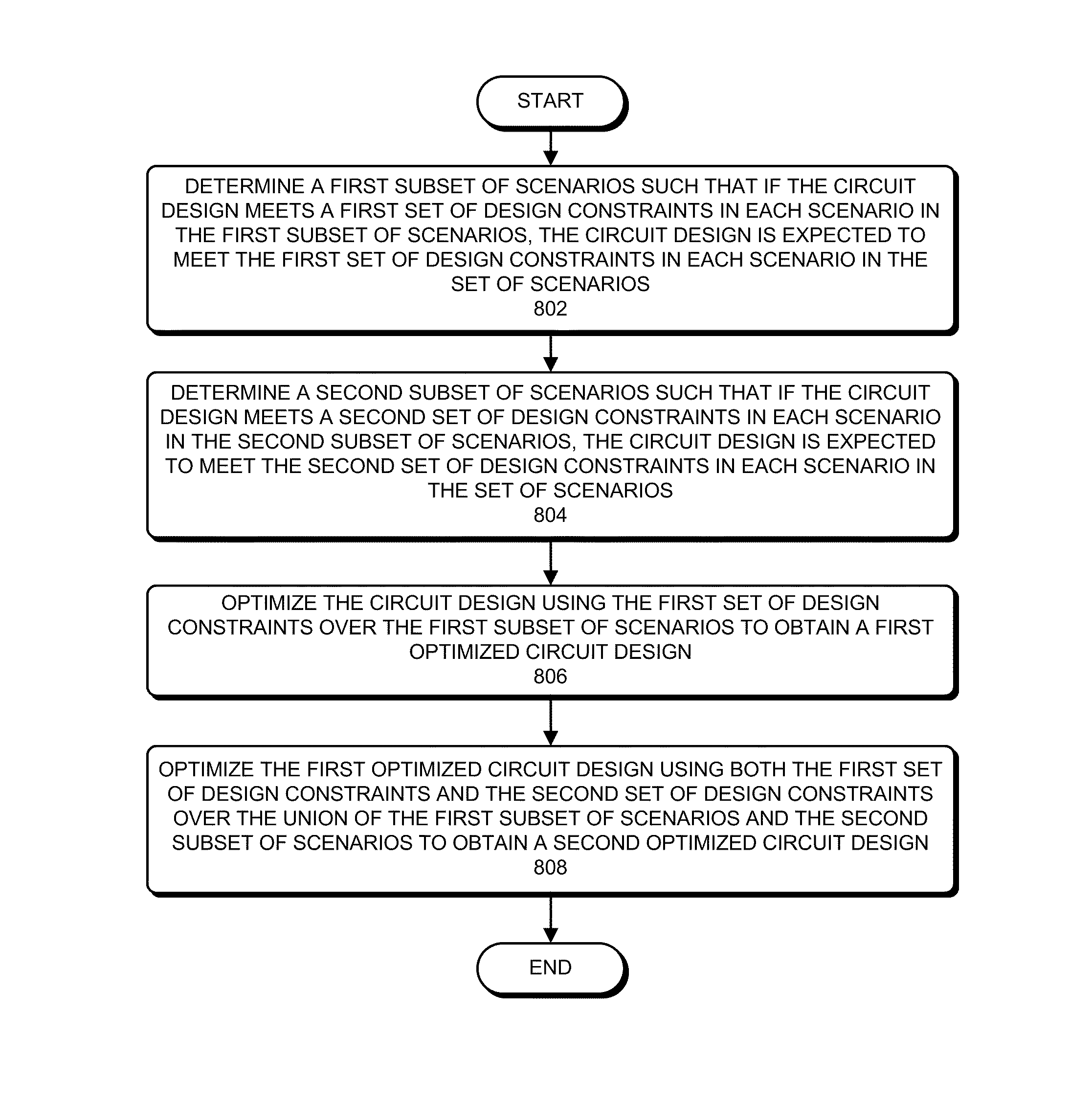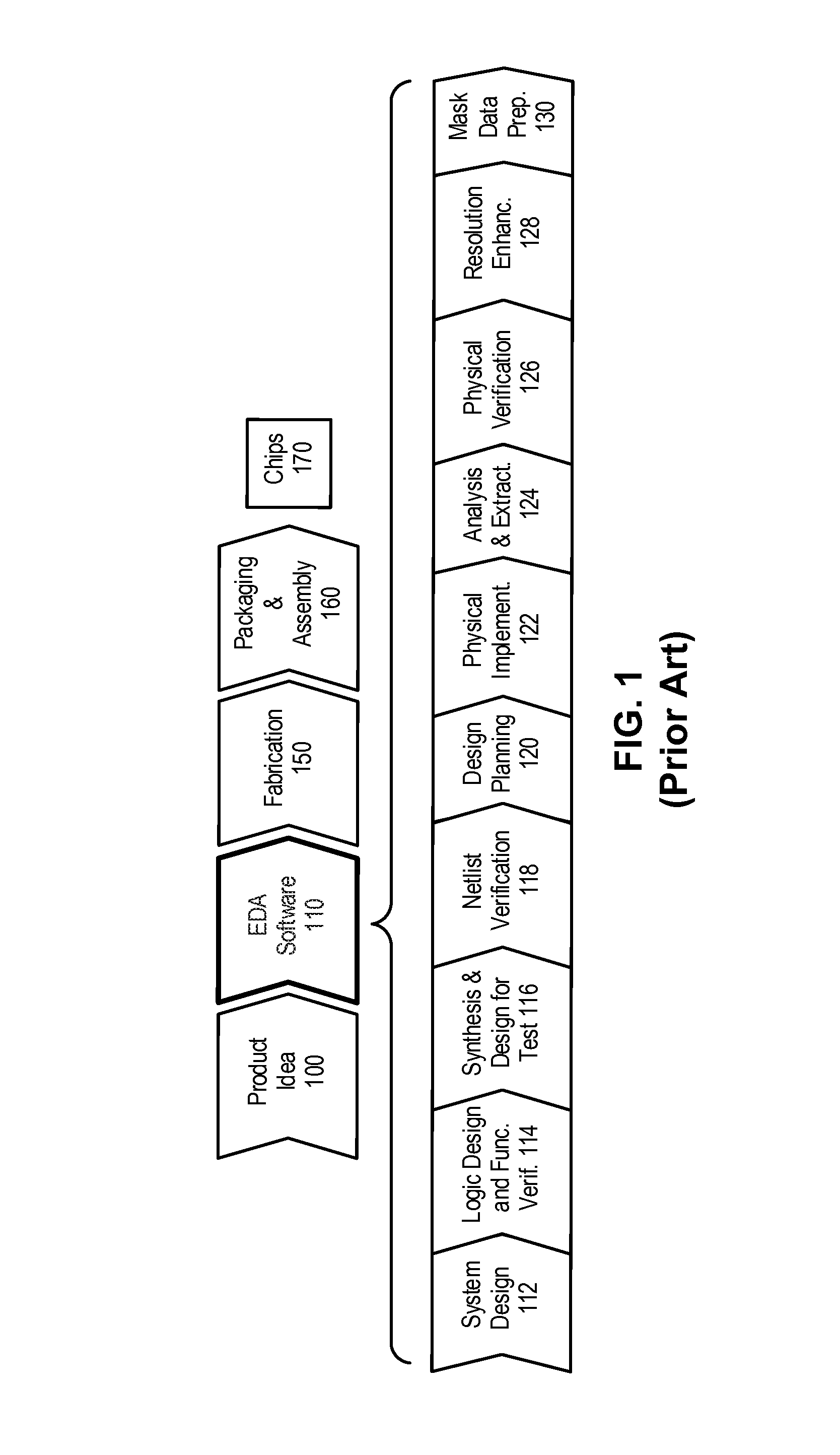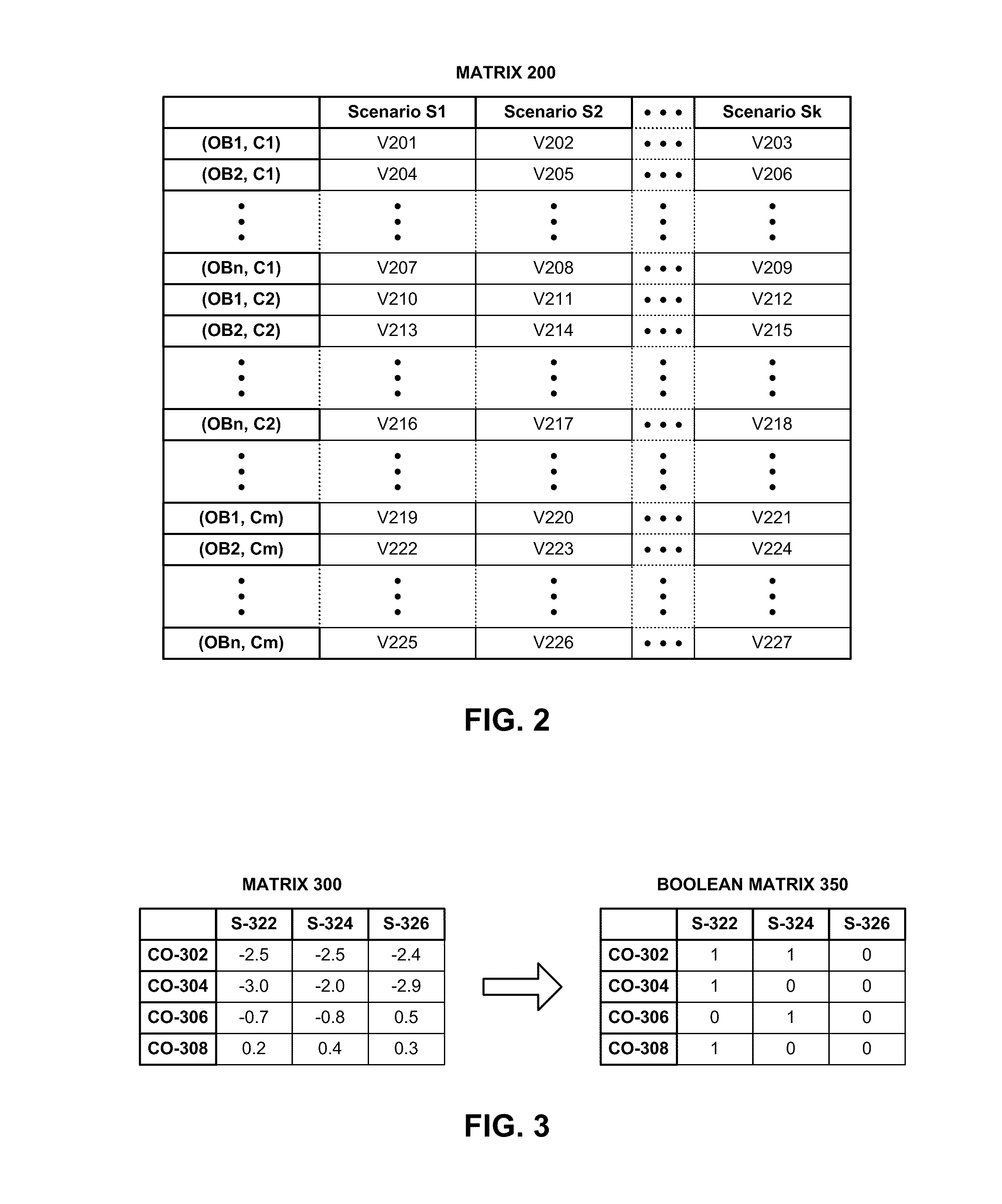[0008]Some embodiments of the present invention provide techniques and systems for reducing the number of scenarios over which a circuit design is optimized. Optimizing a circuit design can involve modifying the circuit design so that one or more design constraints are met. Each scenario in the set of scenarios can be associated with a process corner, an operating condition, and / or an operating mode. During operation, the system can receive a set of scenarios over which the circuit design is to be optimized. Next, the system can compute values of constrained objects in the circuit design over the set of scenarios. A constrained object in the circuit design can be any object in the circuit design (e.g., a net, a gate, a pin or terminal of a gate, a timing end-point, etc.) which is required to meet one or more design constraints in one or more scenarios. The system can then determine a subset of scenarios based partly or solely on the values of the constrained objects, so that if the circuit design meets design constraints in each scenario in the subset of scenarios, the circuit design is expected to meet the design constraints in each scenario in the set of scenarios. For example, the subset of scenarios can be determined using the difference between the actual values of the constrained object and an associated threshold, e.g., the difference between the actual capacitive load on a gate's output and the maximum allowed capacitive load.
[0010]In some embodiments, for each scenario in the set of scenarios, the value of at least one constrained object in the scenario is within a given range of a threshold value associated with the constrained object. In other words, the system can use the range to control the robustness of the scenario reduction process. If the range is high, the starting set of scenarios is much more conservative, and hence, the resulting scenario reduction is more robust. In some embodiments, the range can increase (i.e., the scenario reduction can become more robust or conservative) as the circuit design progresses through a circuit design flow.
[0011]In some embodiments, the system can relax values of some of the constrained objects in a scenario to obtain relaxed values of the constrained objects, wherein a relaxed value is better (i.e., less worse) than the original value. For example, if the slack for a timing end-point is equal to “−3,” it may be relaxed to “−2.8.” Next, the system can determine the subset of scenarios using the relaxed values of the constrained objects instead of the original values, thereby potentially decreasing the cardinality of the subset of scenarios. The system can employ different criteria for identifying candidate scenarios, and candidate constrained objects within those scenarios, for relaxation. For example, the system can use the ratio of the number of violating constrained objects in a scenario to the total number of violating constrained objects across all scenarios to select a scenario as a candidate for relaxation. The system can perform relaxation iteratively until a relaxation limit is reached. For example, system may determine that the relaxation limit has been reached if at least one of the following three conditions is met: (a) the reduced scenario set converges, i.e. the reduced set of iteration ‘j’ and ‘j+1’ is the same, (b) no additional constrained objects meet the criteria for relaxation, and / or (c) the number of scenarios and / or constrained objects that were relaxed has reached a pre-determined upper limit. In some embodiments, progressively fewer values of constrained objects are relaxed as the circuit design progresses through a circuit design flow, thereby decreasing the amount of relaxation in later stages of the design flow.
[0013]The system can then optimize the circuit design using the first set of design constraints over the first subset of scenarios to obtain a first optimized circuit design. In some embodiments, performance of the circuit optimization process can be improved by updating circuit information associated with only the first set of design constraints in only the first subset of scenarios. For example, the system can update maximum-delay timing-information in the circuit design for the first subset of scenarios; and not update minimum-delay timing-information in the circuit design for the first subset of scenarios.
[0015]In some embodiments, the system can optimize the first optimized circuit design by iterating through the second subset of scenarios. For example, the system can order scenarios in the second subset of scenarios in decreasing order of relevance and / or importance. Then, in each iteration, a scenario from the second subset of scenarios can be selected, and the first optimized circuit design can be optimized over the first subset of scenarios and the selected scenario from the second subset of scenarios. This can speedup the optimization process since the circuit information associated with only the first subset of scenarios and the selected scenario from the second subset of scenarios needs to be updated.
 Login to View More
Login to View More  Login to View More
Login to View More 


